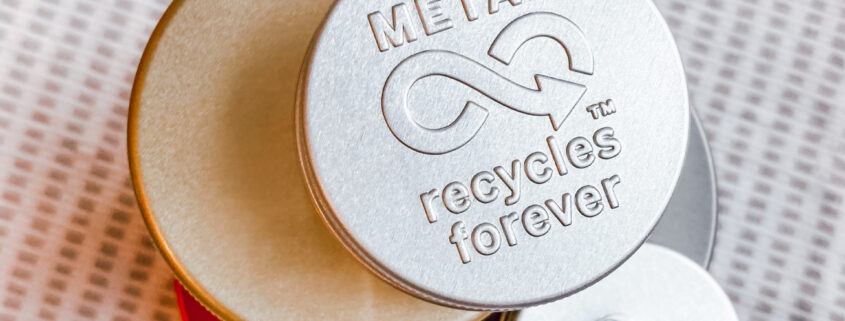Hair is Everything
Chris Saunders, Managing Director, Roberts Metal Packaging talks us through the 2021 post-pandemic packaging industry trends
You might be surprised to read that the biggest thing that’s affected Roberts Metal Packaging since the onset of the pandemic is the fact that nobody has been going out in the evening. There haven’t been any club nights, date nights, weddings, birthday parties, awards ceremonies, or dinner parties.
And why has that impacted us in a big way?
Hair.
As Phoebe Waller Bridge observed in her hit sitcom Fleabag, “hair is everything” – and a big area of our business is haircare products.
As we move into the autumn of 2021, we’re only just getting back to some sort of normality – and consequently, we’re still not seeing any real return to pre-pandemic consumer levels for haircare products. We feel that we’re still likely to feel some impact from delayed orders in the future because the drop in sales hasn’t happened suddenly – there were quite a lot of products in the supply chain before lockdown, so there will be a break before pre-pandemic levels of demand return.
Happily, we’ve had this impact completely offset (and more) by an increase in the number of closures that are being purchased, and we believe that’s being driven primarily by a switch away from plastic.
Has the lockdown given people more time to think about the environmental impact of packaging materials? Has the recent climate change news prompted suppliers to look more closely at their environmental credentials? It’s hard to say exactly, but these are the two major trends we’ve seen across 2021.
When the pandemic hit in 2020, packaging trends leaned towards options that were suitable for postage. As more people shopped online, and many were isolating at home, it became important to use packaging that could fit through a letterbox – be that a shallow cosmetic tin, or a tin robust enough to send baked goods as gifts via the postman.
The shift in demand for haircare products and the change in preferred closure material came as more of a surprise than the demand for mailing packs. People have certainly been talking about the plastic crisis for the last few years, but we hadn’t really seen any significant change in buying habits. Now we’ve seen a noticeable change, but that’s good for metal and good for the environment too, which is wonderful to see in action.
Brexit is another kettle of fish as far as trends go. It has certainly caused a lot of movement in habits; for example, many European customers stocked up prior to Brexit and when it finally happened in January, we saw a leaner period with European business across the first few months of the year.
Reassuringly though, I don’t think we’ve lost any European customers because of Brexit. In part this might be due to a shortage of raw materials; there aren’t enough to go round, the prices of raw materials are going through the roof, and it’s a bit panicky out there because people don’t want to run out of product. Whilst we’ve had a very stable situation with raw materials over the past five years or so, now raw materials prices are increasing almost daily. Has this kicked Brexit into the long grass to an extent? Perhaps, and if you’re a UK-based company, that’s a good thing.
Here at Roberts, we had Brexit stocks which we built up for the ‘first’ Brexit, and then kept for the second and third and final, so we’ve been okay. But if a company is running lean manufacturing principles where they’re working on ‘just in time’ for materials, they will be in trouble now. If you place an order for aluminium today, delivery may not be until sometime in 2022, and some aluminium suppliers are only prepared to allocate certain tonnages to each client.
Roberts has maintained sufficient stock to cover us through Brexit, but I think marketwise it is becoming more challenging. It’s a real shame because we seem to be in this situation where finally something’s happening in terms of people wanting to move from plastic to metal, but raw material availability for both tinplate and aluminium lags.
Despite shortages, it is encouraging to see that clients are dipping a toe in the water with metal packaging. We’ve seen some big brands put some lower volume items into aluminium, which is great, but the transition to metal packaging will be a gradual shift.
Those that are trying to change are very keen to present metal’s sustainability credentials to their own customers, and this seems to be driving a lot of the change. However, there does need to be some further education around the practicalities of metal packaging – in my opinion, we should first aim to reduce rather than dismiss plastic entirely, because plastic free for a lot of clients is just not possible.
‘Plastic-free’ sounds fantastic, doesn’t it? But the problem is that there is no closure on Earth that doesn’t have some plastic in the liner, and some clients are finding this difficult to accept. We need to encourage companies to understand that reducing plastic is a momentous first step and for many of them, the only realistic one. We’re very open to discussions with existing and potential clients on our range of metal products, so I’d encourage anyone considering their packaging needs to get in touch with the team – we’d be delighted to help.
Roberts Metal Packaging sales team: salesteam@roberts-metpack.co.uk



